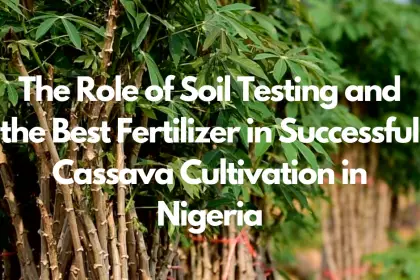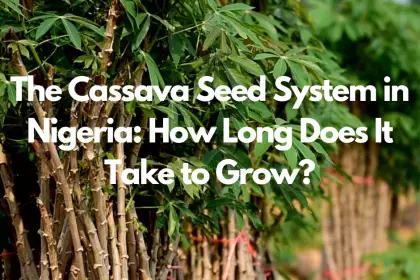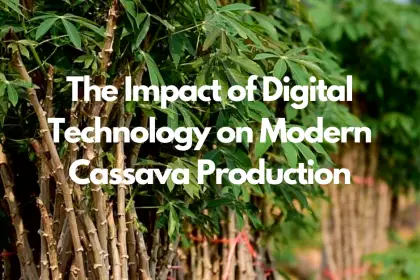Nigeria stands as the world’s largest producer of cassava, marking a significant stride with an annual production surpassing 34 million tonnes. This achievement not only highlights the crop’s importance in Nigeria’s agricultural landscape but also underscores the potential to explore how to maximize profits from cassava farming in Nigeria by diversifying. With over 40 varieties cultivated across 24 states, primarily in the southern region, cassava’s versatility for food, industry, and livestock feed presents a lucrative avenue for value addition.
Diversifying into value-added products like garri, tapioca, flour, and chips represents an untapped potential to elevate profit margins significantly. Considering the smallholder farmers, who constitute 90% of the production force, embracing technological innovations in cassava processing could revolutionize the market demand. This article aims to dissect the various processing techniques, highlight the market demand for these value-added products, and analyze potential profit margins, setting a blueprint for economic growth in Nigeria through cassava farming diversification.
Understanding Cassava’s Potential
Nigeria’s role as the world’s leading cassava producer is both a point of national pride and a significant economic opportunity. With an annual yield of 45 million metric tonnes, valued at $18 billion, the crop’s potential is undeniable. However, the average yield per hectare in Nigeria stands at a modest 7.7 metric tonnes, starkly lower than that of Indonesia and Thailand, which boast yields of 23.4 and 22.2 metric tonnes, respectively. This discrepancy highlights the untapped potential within Nigeria’s cassava industry.
- Production and Consumption Patterns: In the 2018/2019 season, Nigeria produced 53 million metric tonnes of cassava, with a vast majority (over 90%) being processed for food consumption. This demonstrates the crop’s critical role in the Nigerian diet but also suggests a significant portion of cassava production is yet to be leveraged for value-added products.
- Industrial Demand and Supply Gap: There exists a considerable demand for processed cassava products, with the demand for High-Quality Cassava Flour (HQCF) in the manufacturing of bread, biscuits, and snacks exceeding 500,000 tonnes annually. However, the supply lags dramatically behind at less than 15,000 tonnes. Similarly, the demand for cassava starch surpasses 300,000 tonnes, while the supply remains below 10,000 tonnes yearly. This gap represents a substantial opportunity for growth and investment in the cassava processing sector.
The potential for cassava in Nigeria extends beyond traditional food products. Its versatility allows for use in various industries, including the production of alcoholic beverages, animal feed, and even biofuels, where cassava-based ethanol production has seen a 79.8% increase between 2014 and 2018. This multifaceted utility underscores the importance of expanding cassava processing capabilities to meet both local and international demands, thereby enhancing Nigeria’s economic diversification and creating numerous employment opportunities.
Exploring Value-Added Products
Exploring the realm of value-added cassava products in Nigeria reveals a significant opportunity for bridging the supply-demand gap and tapping into diverse industrial applications. The demand for High-Quality Cassava Flour (HQCF) stands at approximately 500,000 tons annually, with a stark supply-demand gap of about 485,000 metric tonnes. Similarly, the gap for cassava starch is about 290,000 metric tonnes. This disparity underscores the potential for substantial growth in the cassava processing sector.
- Primary Value-Added Products:
-
- Garri (51.9%): A staple food, widely consumed for its convenience and nutritional value.
- Fufu (24.1%): A popular traditional dish, showcasing the cultural significance of cassava.
- Tapioca (20.4%): Emerging as a versatile ingredient in both food and industrial applications.
- Starch (3.7%): Utilized across pharmaceutical, textile, and food industries for its unique properties.
The establishment of processing centers in regions like Masaka, Lafia, and Kuje has not only facilitated the production of these value-added products but also created new income streams for communities. This strategic move towards diversifying cassava products, including the exploration of cassava flour in baking and confectionery, as well as the utilization of cassava starch in the pharmaceutical and textile industries, presents a promising avenue for economic growth and sustainability in Nigeria.
Technological Innovations in Cassava Processing
Technological innovations in cassava processing are pivotal for enhancing the efficiency and profitability of cassava farming in Nigeria. By investing in modern technologies and equipment, farmers and processors can significantly improve the quality and diversity of cassava products. Here’s a closer look at the technological advancements:
- Processing Techniques and Equipment:
-
- Peeling, Pressing, Grating, and Washing: The most common processing techniques, utilized by a majority of cassava producers, streamline the initial stages of cassava processing.
- Improved Technologies: Include vibrating sieve, abrasive peeler, motorized grater, drum drier, and screw-jack, which are instrumental in elevating cassava processing to new levels of efficiency and quality.
- Innovations in Drying and Energy Efficiency:
-
- Artificial Drying: Consumes 70-75% of total energy in cassava starch factories, highlighting the importance of optimizing this process.
- Flash Drying Innovations: Development of energy-efficient flash dryers through computer-based simulations has improved drying efficiency, particularly at smaller scales.
- Genetic and Breeding Innovations:
-
- Genomic Resources: Utilization of the cassava chromosome-scale reference genome aids in advanced cassava genetics and breeding efforts.
- Identification of Sequence Polymorphisms: Helps in breeding cassava varieties with improved traits, such as higher yield and disease resistance.
Investing in these technological advancements not only promises to enhance cassava production and quality but also supports the sustainability of cassava farming in Nigeria.
Market Demand and Profit Margins
In 2022, the Nigerian cassava market and its production faced a dichotomy of challenges and opportunities. Despite a decrease in market value and export volume, there was an increase in the average yield of cassava per hectare, highlighting an untapped potential for growth and profitability through strategic interventions in processing and marketing.
- Market Dynamics:
-
- Value in 2022: Decrease in market value and production volume, indicating a need for efficiency and diversification in cassava utilization.
- Export Volume: Declined by X%, suggesting a reevaluation of market strategies and product offerings.
- Yield Increase: An increase in yield per hectare by X% from the previous year, showcasing the potential for higher production efficiency.
The global cassava processing market is on an upward trajectory, projected to reach 368.53 million tons by 2032. This growth is fueled by the food industry’s demand for cassava products, particularly in the Asia Pacific region, which dominates imports. Notably, value addition in cassava processing not only promises to bridge the supply-demand gap but also significantly enhances income and employment opportunities in Nigeria.
- Economic Impacts of Value Addition:
-
- Income Increase: From ₦1,500 to ₦4,500 per week post-value addition.
- Employment Opportunities: Value addition creates new jobs, addressing poverty among cassava producers/processors.
- Investment Returns: A benefit-cost ratio of 1.3 for cassava chips and pellet enterprises indicates a lucrative investment opportunity.
This analysis underscores the importance of embracing technological innovations and market strategies to leverage Nigeria’s cassava production, ensuring a competitive edge in the global market and fostering economic growth.
Challenges and Solutions in Value Addition
In addressing the challenges of cassava value addition in Nigeria, it’s essential to recognize the multifaceted nature of these hurdles and the integrated solutions required to overcome them.
- Infrastructure and Technology Access:
-
- Challenge: Inadequate storage facilities and limited access to modern processing technologies.
- Solution: Investing in cold chain logistics and storage facilities, coupled with providing financial support for acquiring improved processing technologies.
- Financial and Educational Barriers:
-
- Challenge: High cost of machines and maintenance, lack of adequate financing, and low levels of awareness and training.
- Solution: Implementing training programs, facilitating access to farm credits, and launching sensitization campaigns to enlighten cassava processors about the benefits of technology adoption.
- Supply Chain and Market Access:
-
- Challenge: Poor road networks, insecure transportation, and limited market linkages.
- Solution: Strengthening market linkages and value chain coordination through investment in rural infrastructure and promoting income diversification to enhance household food security among cassava farmers.
These targeted strategies not only aim to mitigate the immediate challenges but also foster a sustainable growth environment for the cassava value addition sector in Nigeria.
Conclusion
Through a rigorous exploration of the cassava production landscape in Nigeria, this article has delved into the significant potential that cassava farming holds for the Nigerian economy. It is evident that diversifying into value-added cassava products, accompanied by embracing technological innovations and addressing existing market demand and supply gaps, presents an untapped avenue to boost profitability and economic growth. By focusing on sustainable cassava processing techniques and leveraging Nigeria’s position as the world’s largest cassava producer, there is a clear path toward improved income for farmers and the nation’s overall economic advancement.
In navigating the challenges associated with cassava value addition, it is crucial to implement integrated solutions encompassing infrastructure development, access to modern technology, financial and educational support, and enhanced market linkages. The broadened focus on cassava’s role in driving economic diversification not only underscores the importance of this crop in Nigeria’s agricultural sector but also highlights its potential in contributing significantly to the country’s socio-economic development. As Nigeria continues to optimize its cassava production capabilities, the future looks promising for the sector, with potential ripple effects on job creation, income generation, and overall national prosperity.
FAQs
1. What are the potential earnings from cassava farming in Nigeria?
Cassava farming can be highly profitable when managed correctly. The Return on Investment (ROI) can range from 50% to 300%, varying with the yield and season. Cassava prices can be particularly high in certain years, enhancing profitability.
2. Can you provide a profitability analysis for cassava production?
Cassava production has been analyzed to be a lucrative venture, with total revenue reaching 174,231.81k per hectare. The average profit stands at 54,069.57k, and the gross margin is 62,449.11k per hectare. Factors such as fertilizer use, cassava pricing, and total revenue significantly influence the net returns of cassava farmers.
3. What does the economic analysis say about cassava production in Nigeria?
Economic studies indicate that the average gross margin per hectare for cassava production is ₦24,749.28, which is approximately $65.30, with a gross benefit ratio of 1.38. This ratio suggests that for every ₦1 invested in cassava production, the profit is ₦1.38, indicating a favorable return on investment.
4. How profitable is the cassava trade on a global scale?
Cassava trade has proven to be significant, with the product ranking as the 584th most traded globally in 2022, with a total trade value of $4.54 billion. The exports of cassava increased by 24.7% from 2021 to 2022, rising from $3.64 billion to $4.54 billion, and accounting for 0.019% of total world trade.











